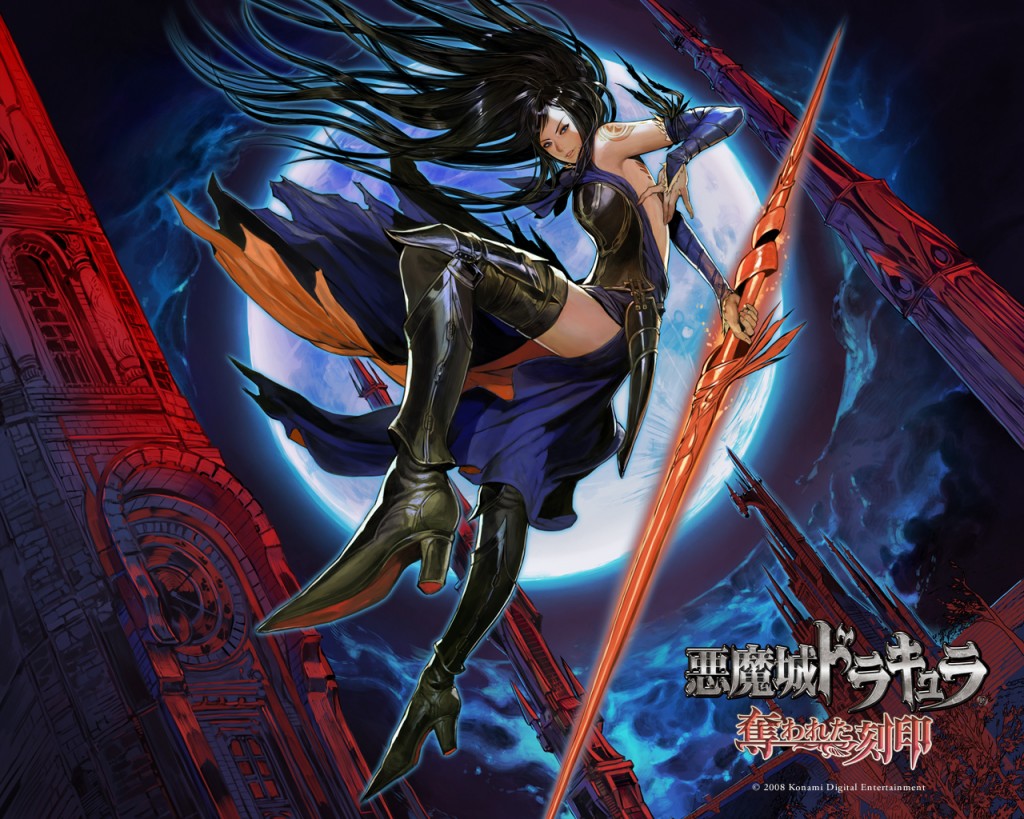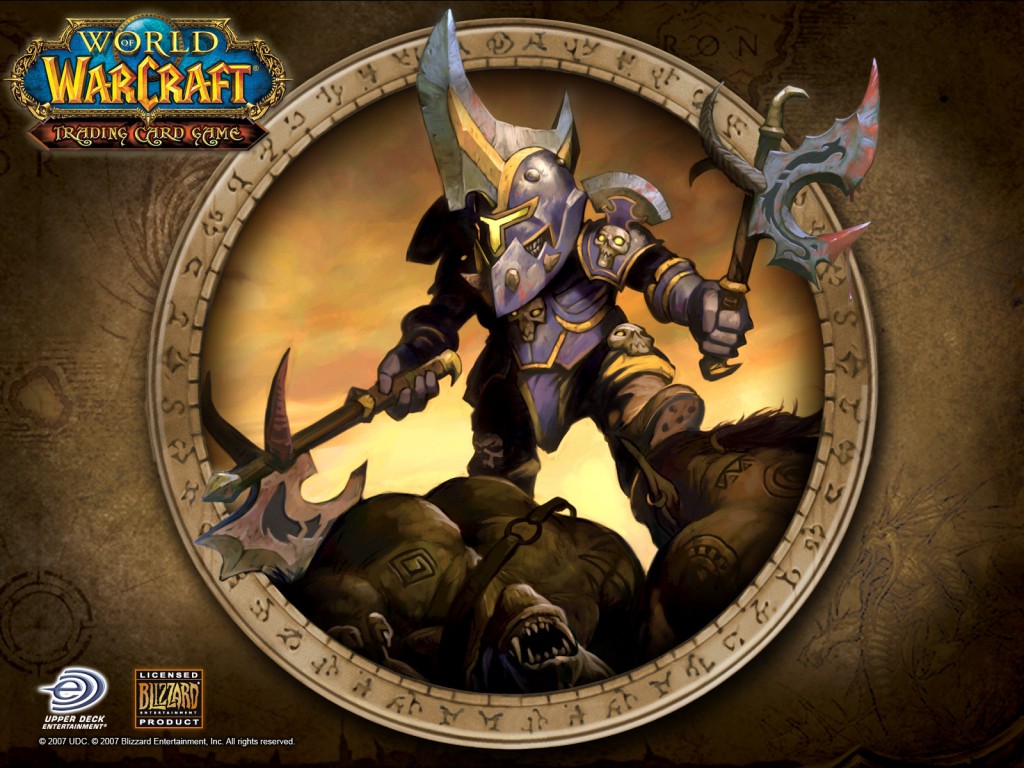Last updated on March 4, 2013
Do you want to know who’s NOT going to talk about Assassin’s Creed (hint: me)? Well, let’s move on to other things before I burn myself out on that series
Castlevania: Order of Ecclesia – I haven’t played the now-reviled “Metroidvania” genre in a long while. I loved Symphony of the Night when it first came out, and have played through it religiously ever since (though not in recent memory…time to start up another game). The main complaint with the newer 2D Castlevanias stem from their difficulty – simply put, they’re just too easy. RPG mechanics allow you to grind past any notable challenge in the game, and finding a great weapon (sometimes by chance) means that you aren’t so much playing a game as a “numbers go UP!” simulator in disguise. It’s unfortunate for a series that was a paragon of challenging and fun video games. Most players of Castlevania before 1997 would agree with this assessment, I’d wager.
Ecclesia, which came out in 2008, sought to rectify these trends. After a string of increasingly mediocre titles like Portrait of Ruin (it’s not bad, but it’s just so derivative as to be nonexistent), Koji Igarashi (director of SOTN and all subsequent Castlevanias except the recent Lords of Shadow) decided to pump the game full of difficult moments and long stretches. Rather than giving the player Castlevania to explore, Ecclesia provides a world map which harkens back to the linear level structure of older Castlevania titles. Stages don’t have as may save points as they usually do in Metroidvanias, and enemies can pose a challenge at times depending on the layout. Still, it amounts to the same idea as the doors between the sections of Dracula’s Castle, except it removes the tedium of walking back to the designated shop area.
Weapons requires you to defeat enemies to obtain them; they’re called “glyphs” here, but they’re functionally identical except that they use magic. You can equip two weapons at once, which can be used alternately for combos. Attacking too rapidly causes the magic meter to deplete – once it does, you can’t use that weapon temporarily. This is an unecessary addition from my view because magic regenerates too quickly to force resource management; it refills in 2-3 seconds tops, which means you just have to avoid damage for a few seconds before you’re back in the fray. The two equipped glyphs combine into super attacks, which use the standard Castlevania hearts; there’s variety, but they fall into the same archetypes we’ve seen for years (arcing attack like axes, straight shot like knives, etc). Since they cost so many hearts, you’ll end up using your standard weapons more often anyway, rendering the system an afterthought.
If I sound rather down on the whole experience, that’s not my intention! Like any good Castlevania title, the controls are spot on, and any deaths were certainly my fault! And yes, getting things and defeating a hard boss still satisfies (although it’s not that hard overall). Still, there’s nothing on offer here that hasn’t been done in any other Castlevania game to date; it’s more a conglomeration of ways to “spice up” the same formula without boring the player to death. It’s competent enough to fulfill my Castlevania craving (seriously, not a single game in two years and I haven’t even touched LoS yet), but it isn’t amazing by any stretch.
Mists of Pandaria Warrior Changes – That image above is so awesome (GNOMES) that I had to use it.
Anyway, warrior has become my favorite class over the life of the game. I was interested in the lore of Death Knights during Wrath of the Lich King, but I find them awkward as tanks. Sometimes you’re taking no damage; sometimes, you take WAY too much damage, and there’s no in-between. The inconsistency got to me after a while, and I pined for the days of Burning Crusade and my warrior, Toroenfuego. Smacking something in the head with a shield is more my style, so it’s either Paladin or Warrior. Paladin requires the brain of a small microscopic organism to play correctly…which is to say that it’s incredibly boring and uninteresting. So, warrior it is!
Warriors have changed subtly in Mists. Warriors, for those not in the know, use a resource known as Rage. The more damage a warrior takes, the more rage he receives; hence, taking damage gives the warrior the ability to use his other abilities, either to do damage, prevent damage, or gain threat on enemies. These depend on what talent specialization you choose (Protection is tanking, while Arms and Fury are variations on DPS). This makes DPS awkward, seeing as the role of DPS in most dungeons and instances is to AVOID damage; Protection, on the other hand, works perfectly with the old mechanics. To fix this in the past, Blizzard has given warriors rage generations abilities or skills, but none have fixed the problem of how DPS warriors get rage, or making Protection have meaningful choices in the use of their nearly unlimited rage pool (tanking = getting hit a lot). That isn’t to say Warrior was ever broken; usually rage would make them incredibly overpowered (seeing as it can always be generated, unlike mana) and then they would be whacked with the nerf bat a few times. The base problem, however, was never fixed.
In Mists, the system has changed to a more active model for rage generation; most active abilities now generate rage (and are free by default, except they now have cooldown timers), and other abilities use that rage at a much higher cost than they were before. I’m not big into the math of these things, but this model requires a much greater need to manage rage. For one, rage usually capped quite quickly; you were trying to dump the rage into as many abilities as possible to the point where warrior play became like using a typewriter. Even at that point, rage would still be capped for the majority of all major encounters in the game, rendering it moot (except for certain DPS specs). Now, however, the cost of your best abilities (half or more of the rage bar) force a pretty even distribution between abilities AND (importantly) makes you monitor rage gain and use. THAT’S a huge change, and a welcome one.
For Protection, this manifests in “active mitigation”, Blizzard’s new idea about the tanking model. Previously, tanks were managing stats BEFORE fights so as to focus on threat generation. Now, with threat generation of warriors and all tanks being hilariously high, the focus is on staying alive and keeping everyone else alive at the same time by taking as much damage as possible. For Arms and Fury, any attack gives rage now, rendering their “rage-starved” status moot for the most part (except Fury, which still has a high hit cap, but it’s not as much of a problem).
Of course, seeing this in practice during Pandaria tomorrow will be the true test of whether these things work well. I hear Warriors are the squishiest tanks of all; that’s surprising, but we’ll see whether live servers and new content might prove this to be otherwise.
———————————————————————————————————————————————————————————————————————–
That’s it for Monday Update. Stay tuned for lots of WoW stuff this week (I think).


